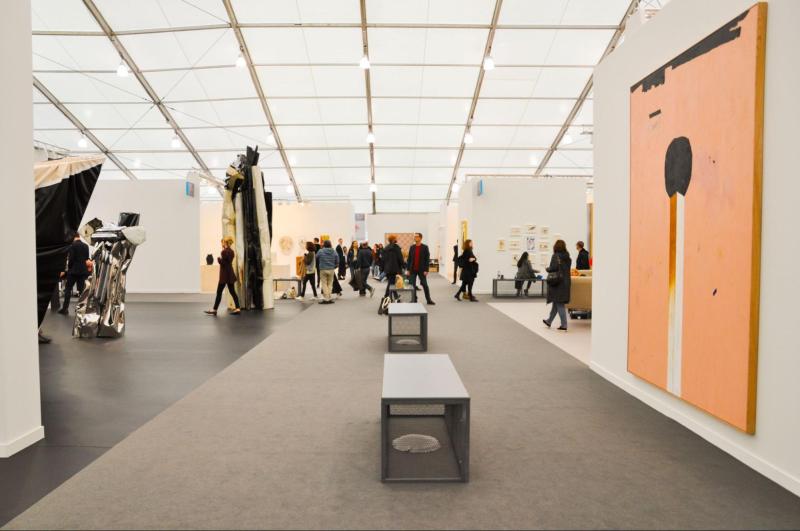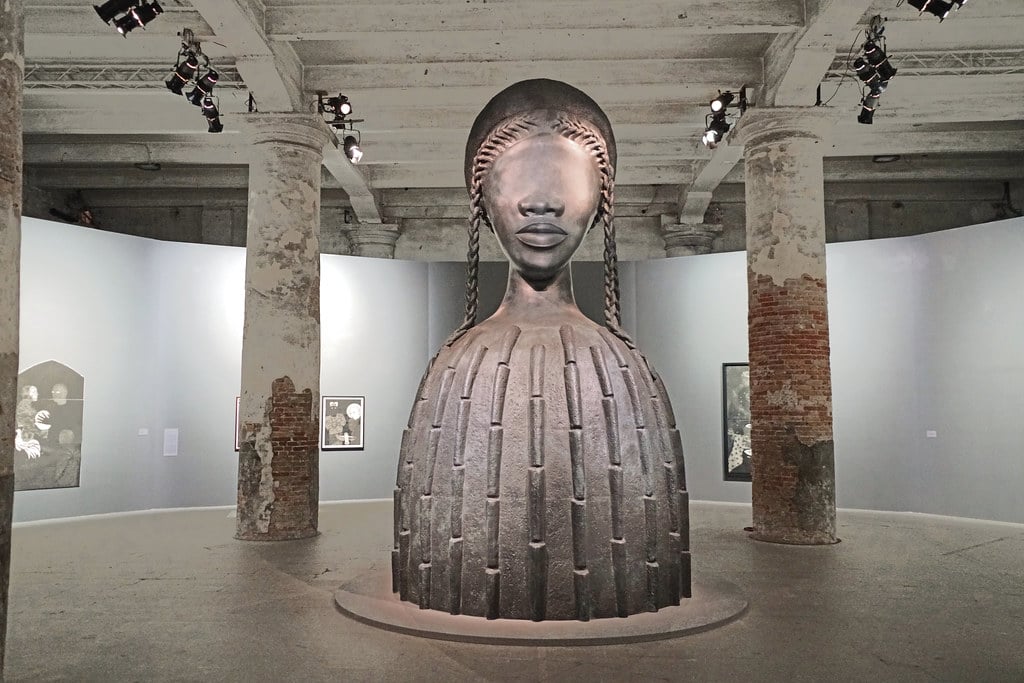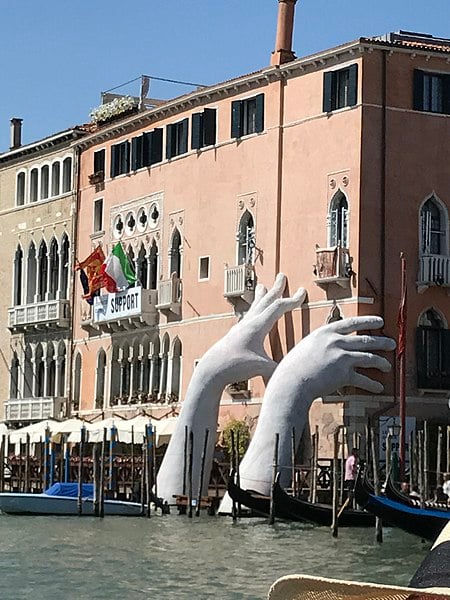When it comes to the art world, everything can (and should) be questioned, but not everything can be answered. That being said, Christina makes it her goal to undertake your visual art questions and give her take on the complexity, confusion and excitement of the art world. Please send your questions to arts ‘at’ stanforddaily.com — she’d love to seek answers with you!
Picture this: On a swelteringly hot day in Venice, tour groups arrive en masse to spend a day hopping from pavilion to pavilion at the Venice Biennale. Another scene: In the back room of an exhibition hall, VIPs sip champagne after getting a first peek at the artworks on display before the formal opening of Art Basel.
Welcome to the dazzling world of art fairs and art biennials: temporary events where galleries, art collectors, advisors, curators, enthusiasts and other members of the public gather to appreciate art. While they may be a phenomenon that feels irrelevant to most people’s experiences with visual art, art fairs and biennials are worth understanding as critical stages for nationalism, capitalism and spectacle.
In the last few decades, the number of art fairs and biennials held worldwide has exploded dramatically. Only three contemporary art fairs existed in the 1970s, and over 300 art fairs operate in the world today. In fact, there are so many art fairs and biennials that terms have been coined to describe the network of global biennials — the “biennial circuit” — and the exhaustion of those who travel from city to city to attend fairs — “art fair fatigue.”
Art fairs help galleries gain presence in cities, facilitate the sale of artworks and capture new audiences in emerging markets. Galleries pay fees to secure exhibition booths to display artworks for sale. Some art fairs have such a major presence in the art world that they have expanded into international “chain” fairs, such as Frieze Art Fair and Art Basel.

Art biennials, which function as sites of display of new art trends and practices, are slightly different from art fairs. Because of their greater scale, biennials take longer to organize and occur every two years, as reflected in their prefix. The world’s first and most famous biennial is the Venice Biennale, established in 1893. Following Venice’s example, there has been a massive growth in international biennials, notably in the global south in the late 20th century.
Despite the overwhelming number of art fairs and biennials that take place worldwide, the most prominent ones offer a generic set of experiences. Most art fairs take place in big convention centers divided into a grid of rectangular booths. They invite the same big-name galleries, who don’t shy away from exhibiting similar artists year on year. This dynamic also exists in the art biennial space. Art historian Vittoria Martini remarks that the “homogenization of discourses” in the exhibition space has weakened its own potential to interact with specific geographic localities and support more radical experimentations in art.

This activity reflects larger patterns of economic and political change in the world and increases the cultural visibility of certain countries. Art critic Caroline Jones asserts in “The Global Work of Art” that biennials help integrate countries grappling with histories of totalitarian regimes into a wider international community. Through art biennials, countries can position themselves as postindustrial centers of liberal arts and free speech.
Because of their non-commercial focus and larger venues, biennials can exhibit daring, large-scale installations by lesser-established artists. That being said, events like the Venice Biennale still adopt modes of display that recall the archaic World’s Fair model. At the Venice Biennale, participating countries select artists to represent them in national pavilions, and there is even an award given for “best national participation.”
This model can demonstrate dominant artistic concerns within a country and make political statements. For example, the curators of the 2022 Russian Pavilion withdrew from the Venice Biennale this year, stating that “there is no place for art” when “citizens of Ukraine are hiding in shelters.” The use of national pavilions can render artworks a tool of international diplomacy or promote interpretations that generalize and oversimplify a country’s artistic landscape.
Art fairs and biennials can strongly and positively affect a host city’s image, boost tourism and build local interest in the arts. However, they perpetuate problems of accessibility, commodification, virtue signaling and more, as demonstrated through art world satirist Jerry Gogosian’s memes. It is clear, however, that these events are a continued testament to the enormity and interconnectivity of the art world network.
